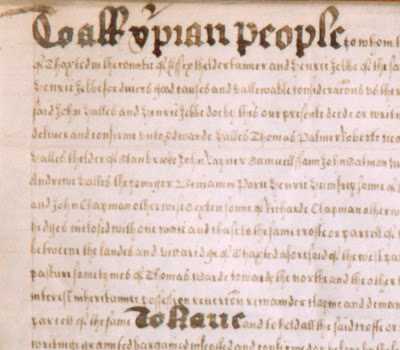If you have ever landed at Stansted Airport, you might have seen Thaxted from a plane's window, as it lies just a few miles away and the planes flying overhead are a constant cause of noise in this otherwise quiet Essex town. It is an old market town with a few historic buildings, one of which is the Guildhall, a timber framed structure dating from the 15th century. Now it houses a small museum exhibiting mostly old documents, which are quite interesting for a calligraphy student. The documents range from the 17th century up to the mid 19th, so one can observe the development in calligraphic styles.
Calligraphy in old churches and other places as seen during cycling tours around Europe.
Sunday, November 21, 2010
Friday, November 12, 2010
Carlisle
Carlisle's chief tourist attraction is Hadrian's Wall, the best preserved fragment of which is in the vicinity. The town has also a fine cathedral with two points of interest for a calligraphy enthusiast. One is the Gothic polychromy at the back of wooden stalls, lives of saints in a form of a comic strip, each picture with a caption in mediaeval English. Here I reproduce two captions from a life of St. Augustine (the first one says: "They buried his body with deference here in his own church of Hippona") and two more from the life of St. Cuthbert. They were clearly written by a different hand, although at approximately the same time. The other point of interest is a treasury in the crypt, where old chalices and patens are shown. Some of them have inscriptions stating the name of the donor as well as the date. They are, of course, written in the most elegant style of the time.
Thursday, November 4, 2010
Nikolaikirche in Berlin
Nikolaikirche in Berlin looks like a Gothic church. It stands in the tourist area of Nikolaiviertel and the usually open doors invite you to enter. When you do enter, however, a man approaches you and says (in German) that this is a museum and you must purchase a ticket to look around. It is an extremely uninteresting museum; its exhibition consisting mostly of old rusty artillery shells and a number of weathered epitaphs. Uninteresting that is, unless your hobby happens to be calligraphy. The epitaphs are in bad condition, but the calligraphy in some of them is excellent. In fact - although its creators didn't intend it to be such - it could be called a museum of calligraphy. The best inscriptions are in the Baroque German fractur.
Subscribe to:
Comments (Atom)



















